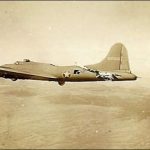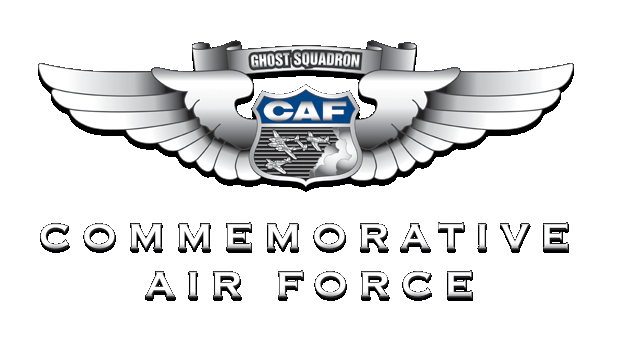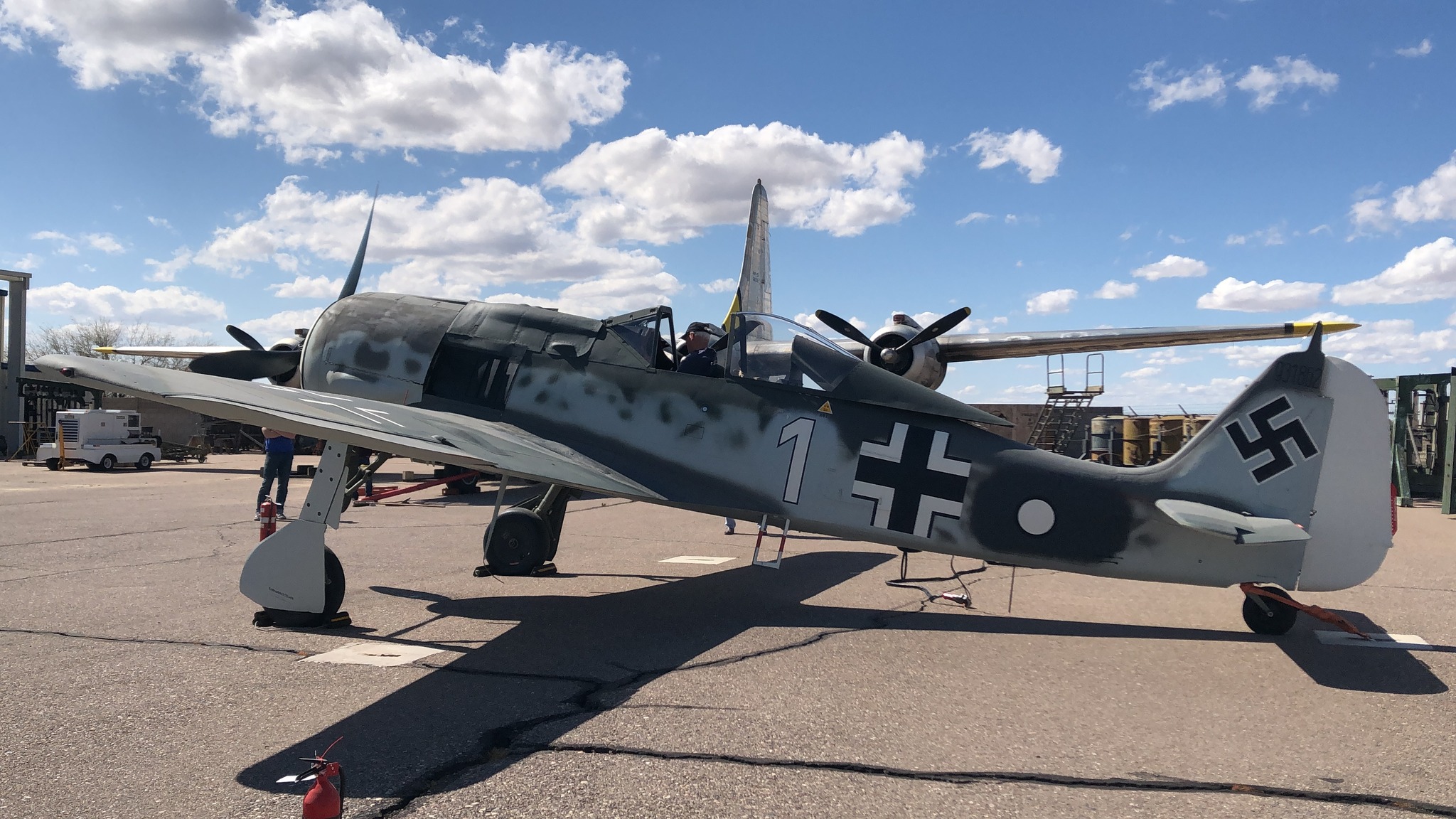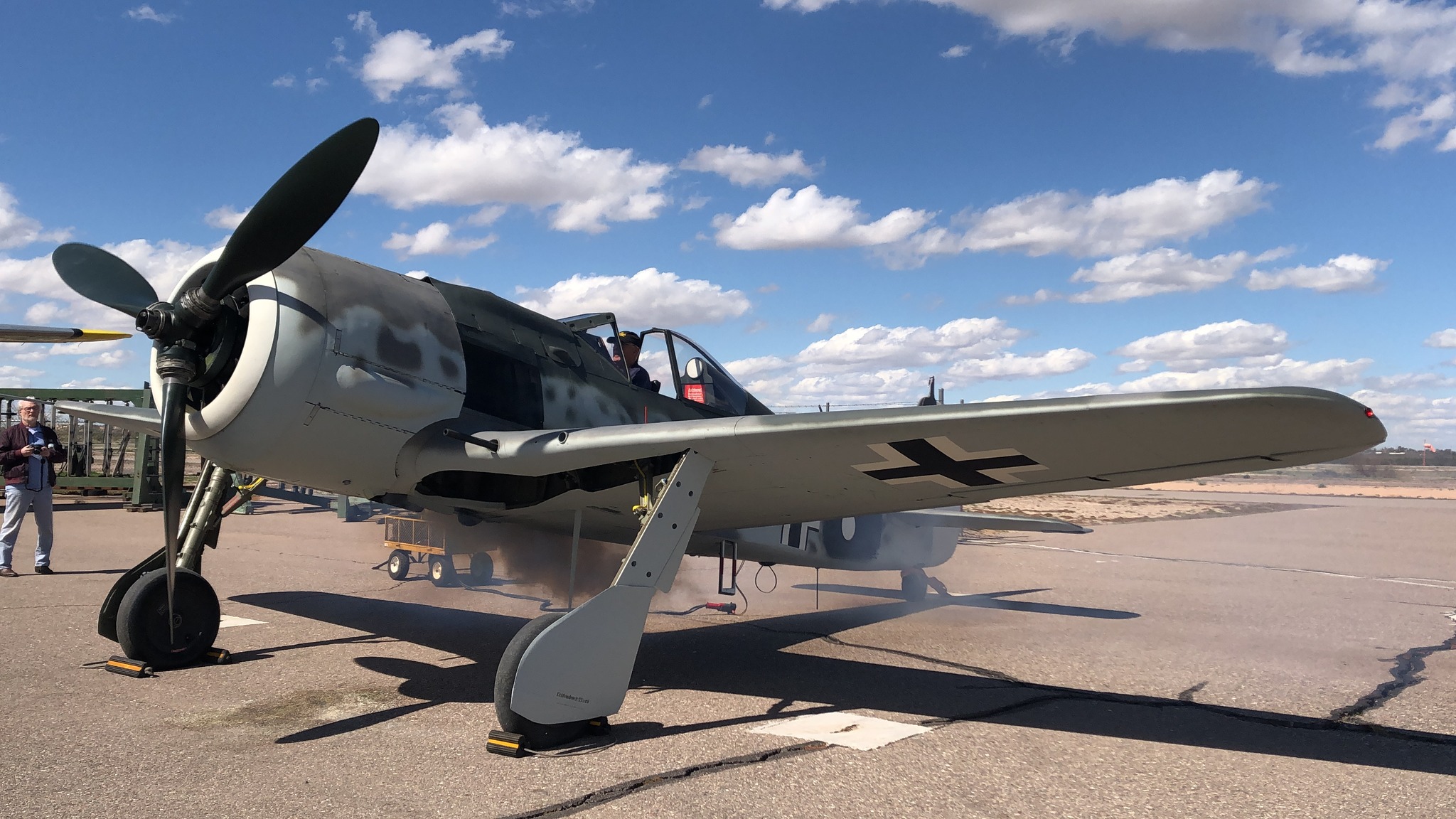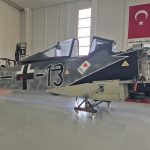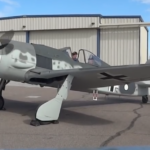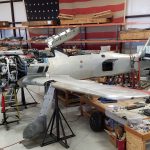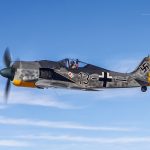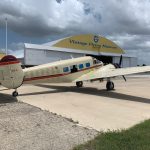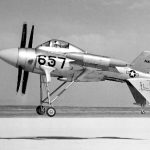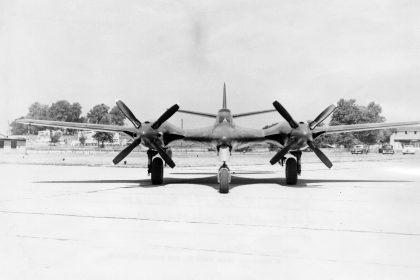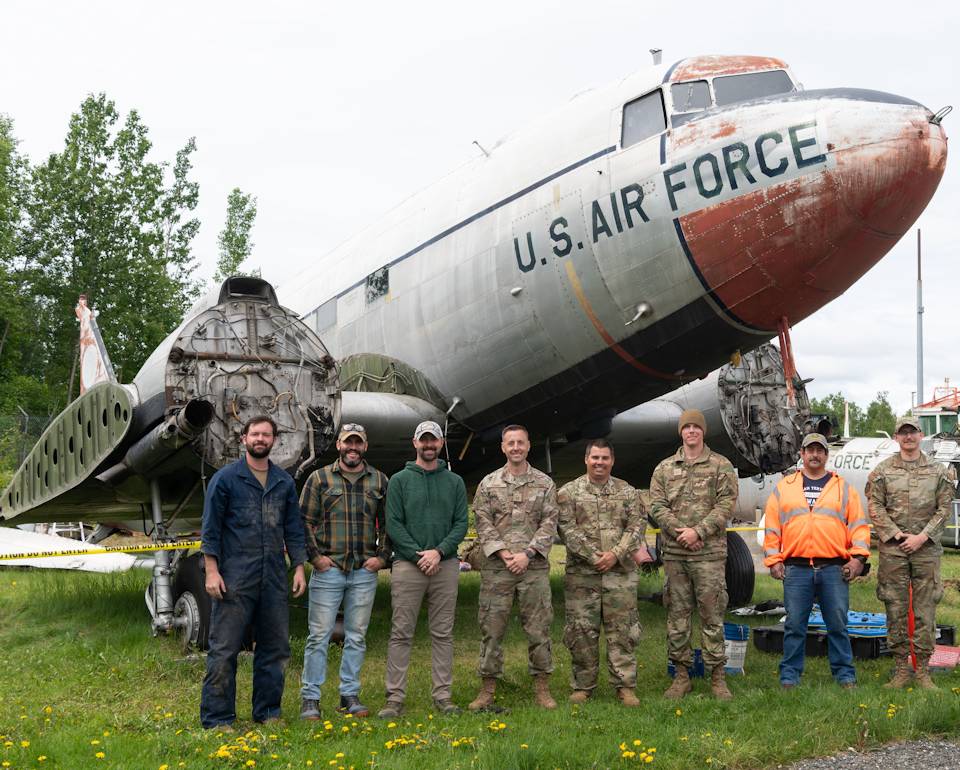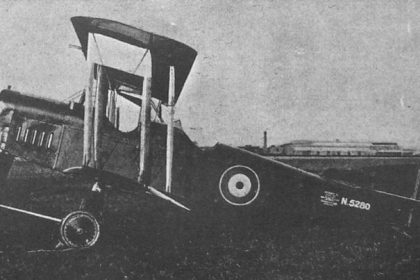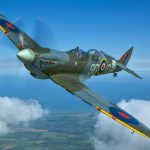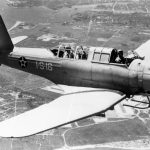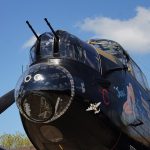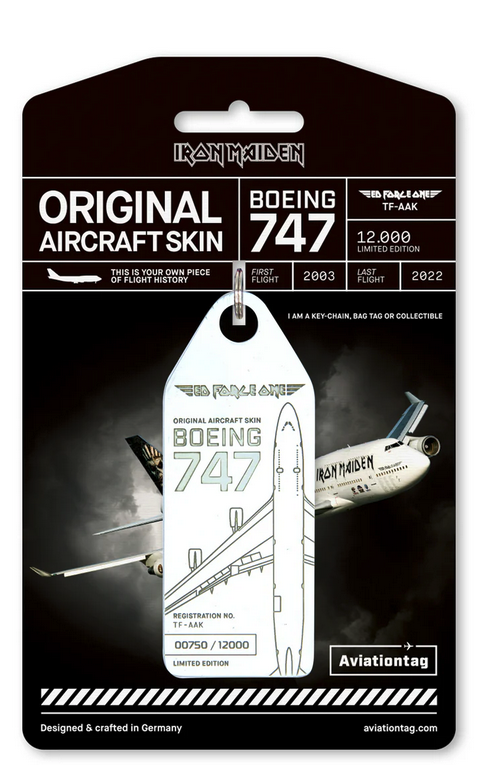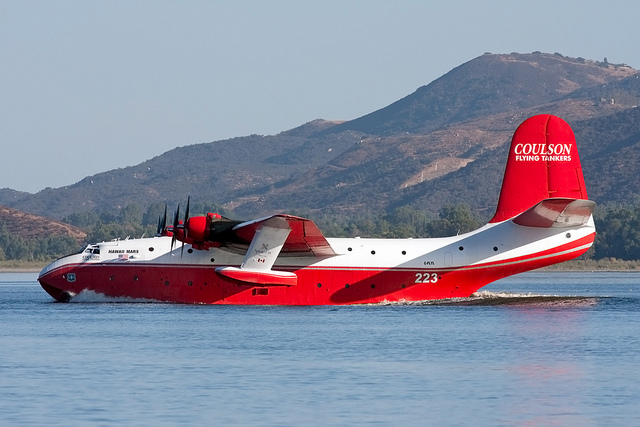The restoration of the BMW 801-powered Focke-Wulf Fw 190 is nearing a critical milestone. Led by Dave Goss and his team at GossHawk Unlimited in Casa Grande, Arizona, the aircraft—known as “White 1”—recently had its engine reinstalled, marking the next major phase in a years-long restoration project that has captivated warbird enthusiasts. GossHawk Unlimited has been a sponsor of Vintage Aviation News for many years.
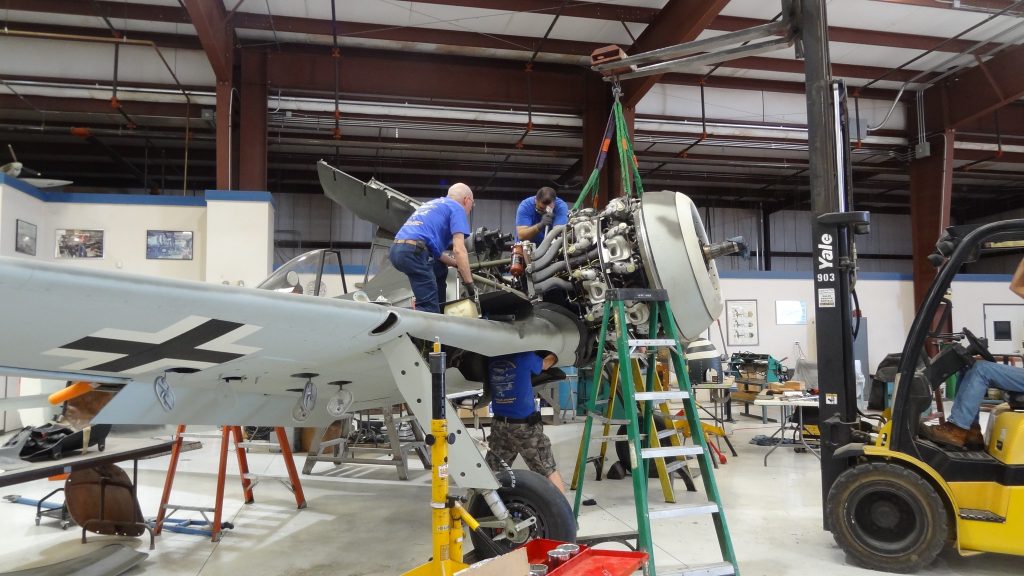
After many years of painstaking work, Focke-Wulf Fw 190F-8 Wk.Nr. 93182—known worldwide as “White 1”—is edging closer to flight. Originally restored under the guidance of Dr. Mark Timken in Kissimmee, Florida, the aircraft’s resurrection owes much to his dedication. In 2017, Timken reluctantly passed the torch, and the American Heritage Museum assumed stewardship of the project. The aircraft was then transferred to GossHawk Unlimited, a firm renowned for its restoration expertise. Notably, GossHawk previously completed the airworthy rebuild of the Flying Heritage & Combat Armor Museum’s Fw 190A-5 (Wk.Nr. 151227) in 2010, further affirming their credibility with this rare type.
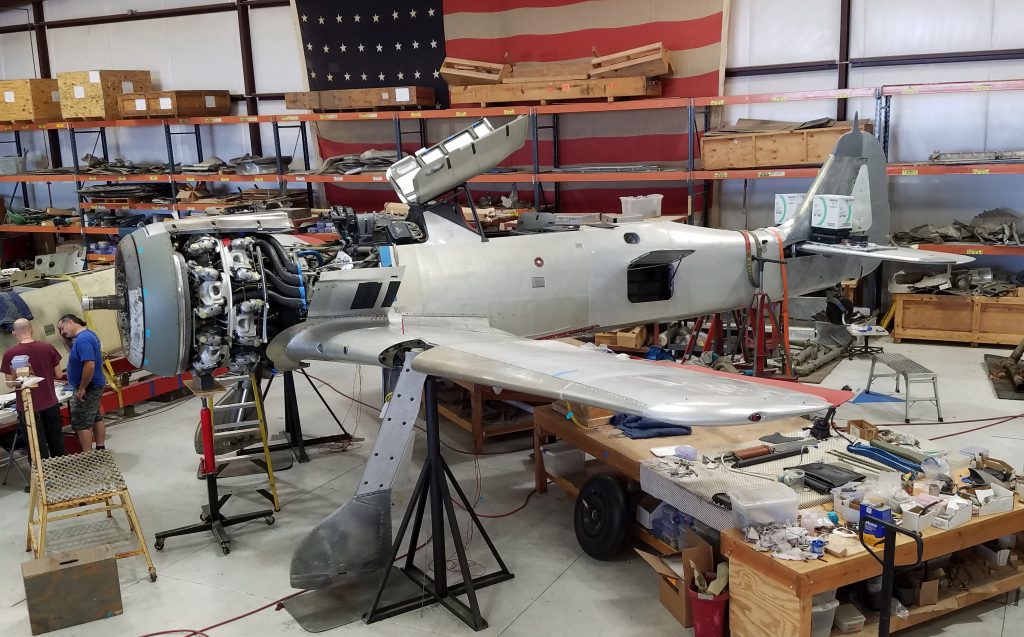
In an exclusive interview, Dave Goss, founder of GossHawk Aviation, provided Vintage Aviation News with an in-depth update on the work completed since the last reported engine run in February 2023. At that time, the team had posted a video showing the rare BMW 801 engine coming to life, but much has happened since behind the scenes.

Engine Troubleshooting and Resolution
“We probably did somewhere between one and two hours on the engine in 2023,” Goss explained. “We had completed the airplane structurally and cosmetically, but we had to send the engine back to Vintage Radials and Mike Nixon for final testing before it was ready for flight.” While attempting to push the engine toward takeoff power, the team observed fluctuating RPMs—an indicator that further inspection was needed. Vintage Radials identified and resolved the issues, then put the engine through a comprehensive run-up sequence that simulated six missions, including startup, warmup, takeoff power, cruise, and descent. The result? “Excellent power, excellent pressures and temperatures, and no leaks,” Goss reported. Due to an increased workload at GossHawk, reinstalling the engine was delayed until early June 2025. “We finally got the engine back on the airframe yesterday,” Goss confirmed during the interview. “Now we’re starting the hook-up and will soon resume engine runs to complete the project.”
A Unique German Powerplant
The BMW 801 radial engine is a technological marvel that set the Fw 190 apart from other WWII fighters. Compared to typical American radial engines, its level of automation and engineering complexity is striking. “Most aircraft of that era had three levers: throttle, mixture, and prop,” said Goss. “This has just one lever—technically still called a throttle, but it functions more like a power lever.”

This single lever controls a command unit that automatically manages mixture, propeller pitch, and even magneto timing. It also adjusts airflow into the supercharger based on throttle position. According to Goss, “It’s German, it’s complicated,” and even WWII-era ground crews often lacked the expertise to service it—typically sending the entire engine back to a depot for repairs.
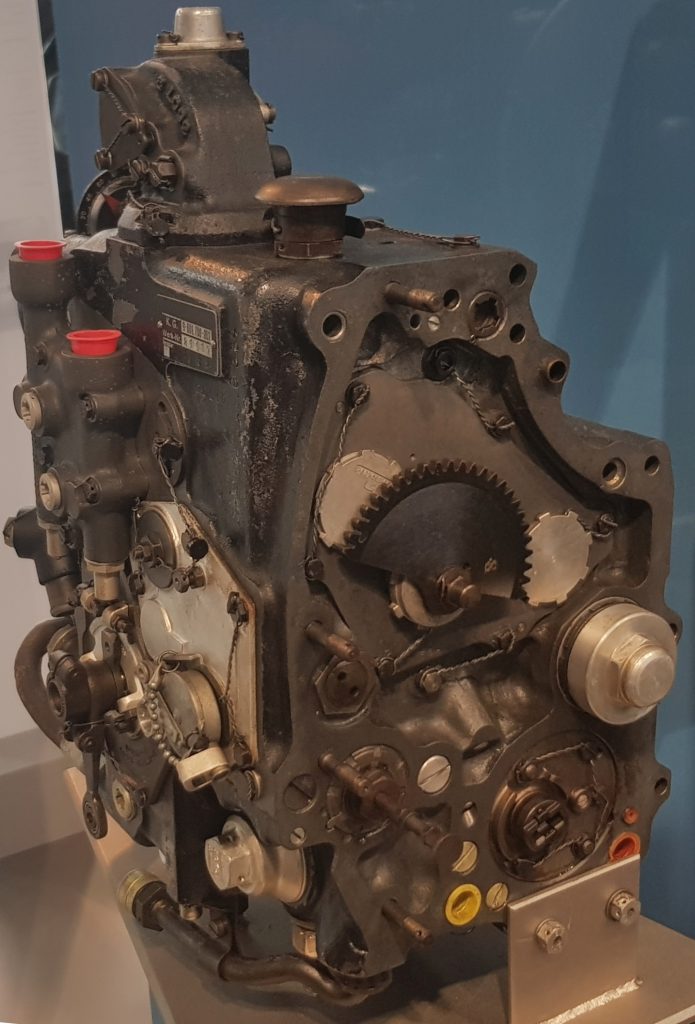
Cooling is another unusual feature of the Fw 190’s design. The aircraft employs a pressure cowling system, driven by a fan located behind the propeller that turns at a different speed and generates pressure inside the cowling. “It forces air not just through the cylinder fins and the oil cooler, but in reverse—air enters the back of the cooler and exits out the front through a gap on the armor ring plate. Totally opposite of typical American radials,” Goss noted.
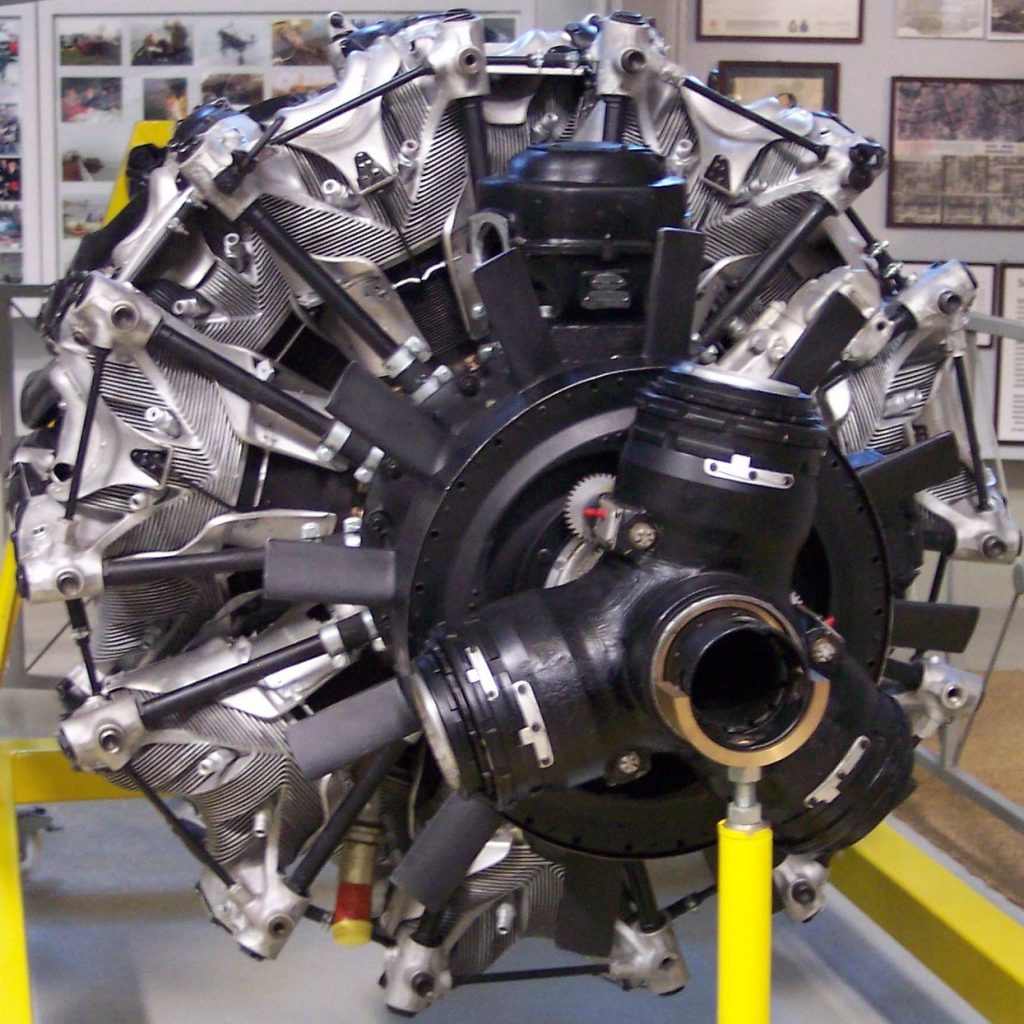
Remaining Tasks and First Flight Outlook
While the reinstallation of the engine is a major milestone, several other systems still require attention before the aircraft can take to the skies. “We need to finish the brake system, re-rig the flaps, and address a leaking forward fuel boost pump,” Goss said. “During engine runs, we might bypass the forward tank and use the aft tank until we fix the leak.” The restoration uses original pumps and systems wherever possible, which adds authenticity but also complexity. Weight and balance calculations and taxi tests remain on the checklist before the aircraft will be considered flight-ready.
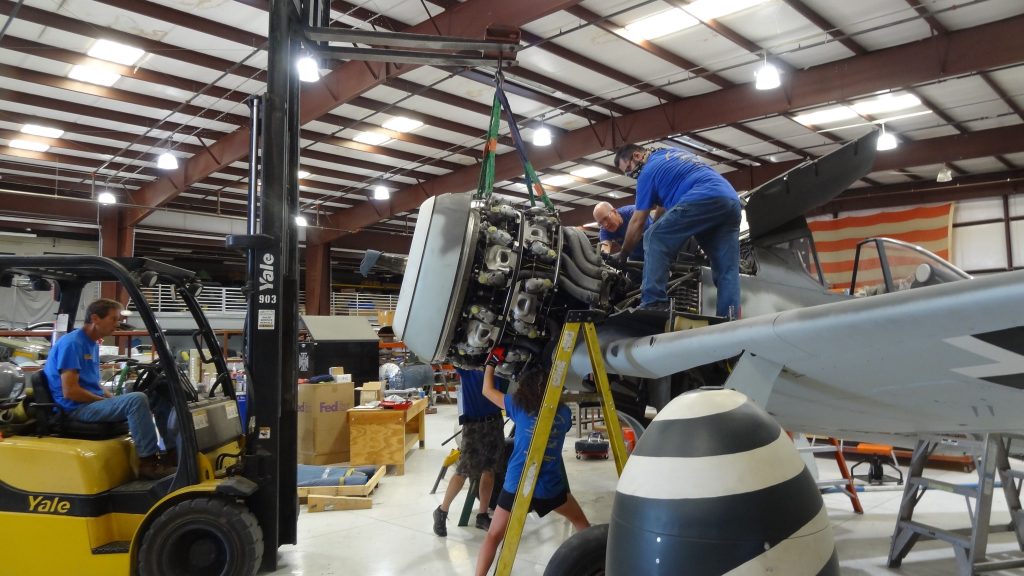
As for a potential first flight date, Goss offered cautious optimism. “That decision ultimately rests with the American Heritage Museum,” he explained. “We need to complete these final tasks, and then they’ll determine if and when the flight will happen. If the aircraft is licensed for flight, the FAA requires at least ten hours of test flying.”
A World-Class Restoration Effort
This project is not just a technical feat—it’s a tribute to the legacy of one of the most iconic Luftwaffe fighters of World War II. “White 1” was previously displayed at the Museum of Flight in Seattle and underwent an earlier restoration in Kissimmee, Florida, before coming to GossHawk Unlimited for completion and airworthiness certification. For now, the focus is on safely bringing this historic warbird back to life with all the fidelity and precision it deserves. “It’s a very valuable aircraft, so every step must be deliberate,” Goss emphasized. Stay tuned to Vintage Aviation News for continued updates as “White 1” edges ever closer to flight. For more information about GossHawk Unlimited, visit www.gosshawkunlimited.com.
Update as of June 20, 2025: The Goshawk performed an engine run this morning and shared a clip on its Facebook page.





